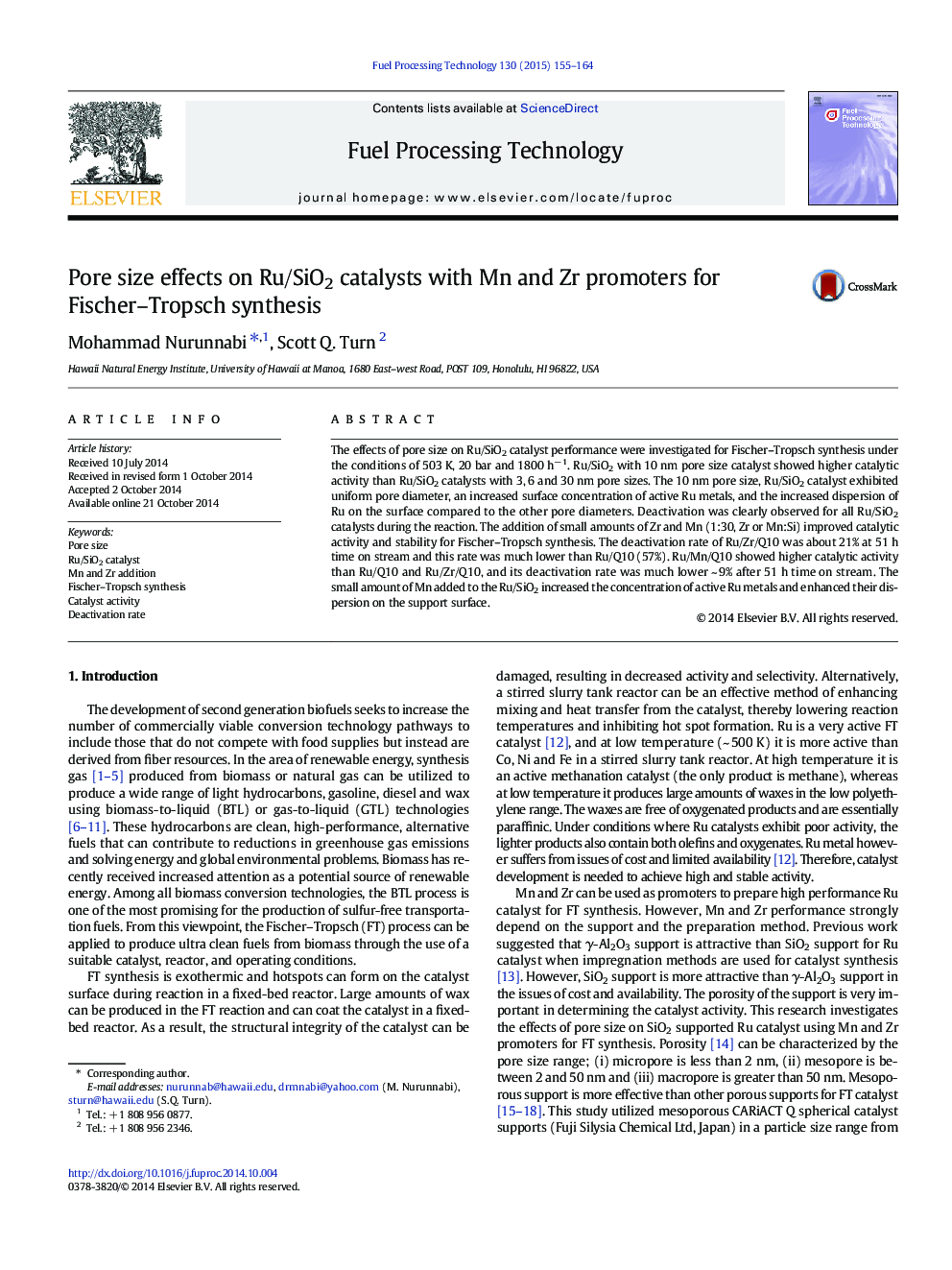| Article ID | Journal | Published Year | Pages | File Type |
|---|---|---|---|---|
| 209549 | Fuel Processing Technology | 2015 | 10 Pages |
•SiO2 support with 10 nm pore diameter provided better performance than SiO2 supports with 3, 6, and 30 nm pore diameters.•Ru/Mn on a SiO2 support provided better performance than Ru/SiO2 and Ru/Zr/SiO2 catalysts.•Deactivation of the Ru/Mn/SiO2 catalyst was 9% after 50 h of time on stream.•CO conversion efficiency for the Ru/Mn/SiO2 catalyst was greater than 85% after 50 h of time on stream.•Ru/Mn on a SiO2 support displayed high concentrations of active Ru metal compared to Ru/SiO2 and Ru/Zr/SiO2.
The effects of pore size on Ru/SiO2 catalyst performance were investigated for Fischer–Tropsch synthesis under the conditions of 503 K, 20 bar and 1800 h− 1. Ru/SiO2 with 10 nm pore size catalyst showed higher catalytic activity than Ru/SiO2 catalysts with 3, 6 and 30 nm pore sizes. The 10 nm pore size, Ru/SiO2 catalyst exhibited uniform pore diameter, an increased surface concentration of active Ru metals, and the increased dispersion of Ru on the surface compared to the other pore diameters. Deactivation was clearly observed for all Ru/SiO2 catalysts during the reaction. The addition of small amounts of Zr and Mn (1:30, Zr or Mn:Si) improved catalytic activity and stability for Fischer–Tropsch synthesis. The deactivation rate of Ru/Zr/Q10 was about 21% at 51 h time on stream and this rate was much lower than Ru/Q10 (57%). Ru/Mn/Q10 showed higher catalytic activity than Ru/Q10 and Ru/Zr/Q10, and its deactivation rate was much lower ~ 9% after 51 h time on stream. The small amount of Mn added to the Ru/SiO2 increased the concentration of active Ru metals and enhanced their dispersion on the support surface.
Graphical abstractFigure optionsDownload full-size imageDownload as PowerPoint slide
